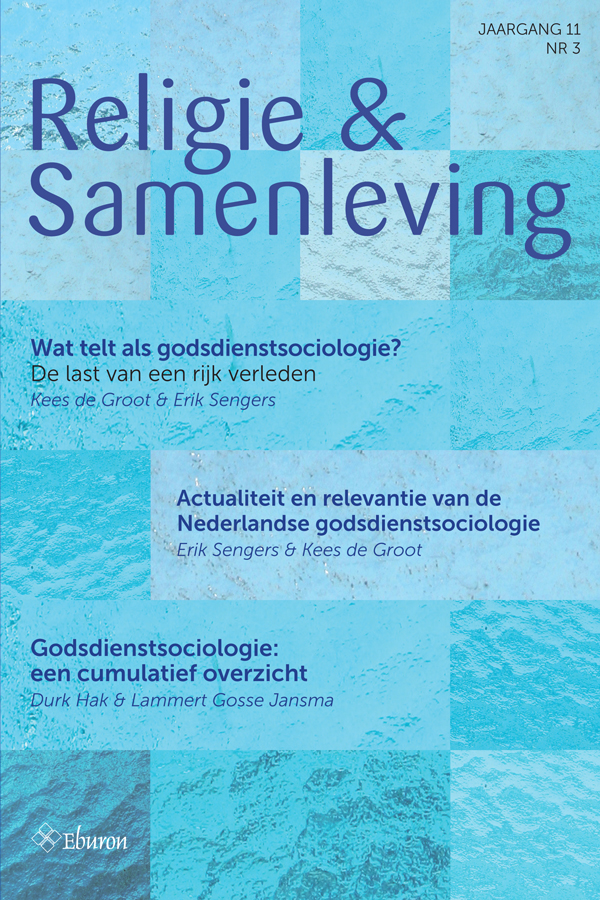Wat telt als godsdienstsociologie?
De last van een rijk verleden
DOI:
https://doi.org/10.54195/RS.12217Samenvatting
In 1960, the Dutch journal of the Catholic Social-Ecclesial Institute (Kaski) Sociaal Kompas became Social Compass. This shift rounded off a period now considered as the heyday of Dutch sociology of religion. Ironically, in those years, Catholic sociologists in particular contested the legitimacy of taking religion as an object of sociological study. Each period in the history of sociology of religion appears to present a different face of it due to the interplay between the political field, the religious field, and the academic field, while the self-identification of its practitioners as sociologists of religion is far from self-evident. After 1980, further secularization resulted in a subsequent decline of chairs in sociology of religion. As direct, competitive government funding of academic research gained traction, the social-scientific study of religion continues to be funded. In so far as politicians and religious professionals continue to be concerned about issues such as the rise of Islam and new spirituality, the call for the social-scientific study of religion remains. The identification of these researchers with sociology of religion as a specialty, however, is less self-evident. What makes a sociologist of religion?




